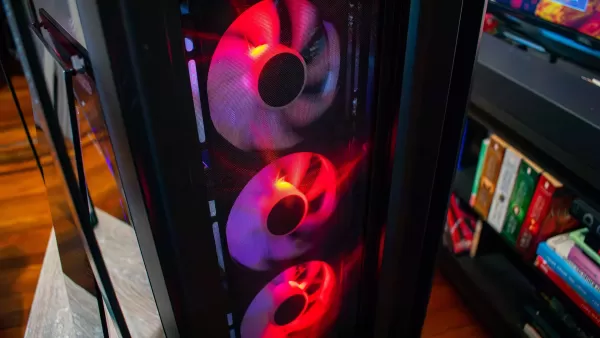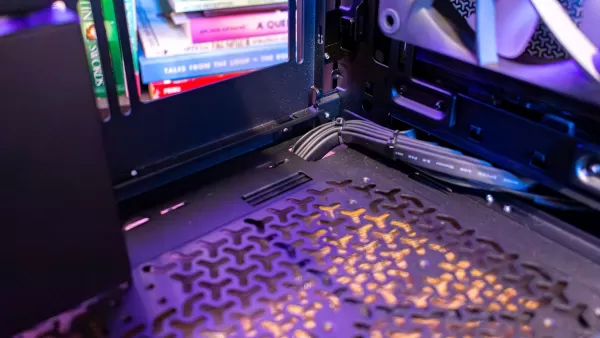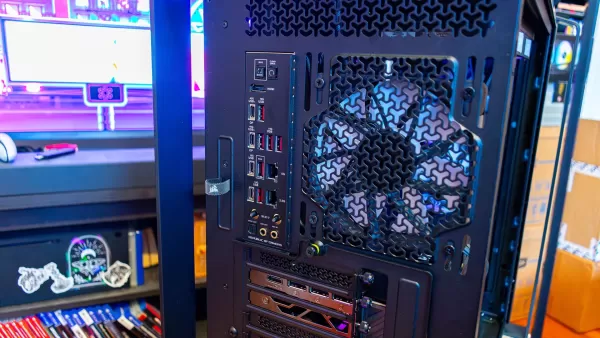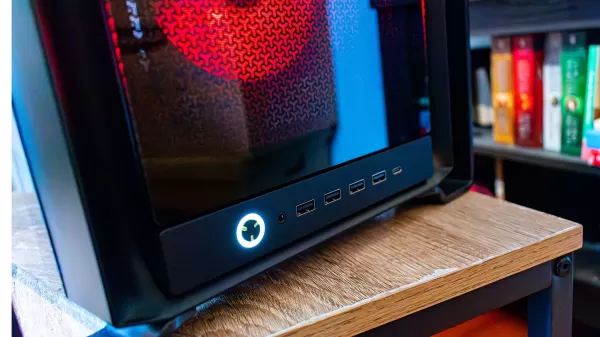When selecting a gaming PC, options range from mass-produced prebuilt systems by brands like Alienware to premium boutique builds. The Origin Millennium strikes a balance, offering high-end performance without the extravagant design flair of competitors like Maingear or Falcon Northwest.
The Origin Millennium is a robust, custom-configured gaming rig built with standard components. It delivers a hassle-free experience, sparing users the complexity of assembling and cable management. However, be prepared for the challenge of transporting its hefty wooden crate, as I discovered when hauling it to my apartment.
Buying Guide
The Origin Millennium starts at $2,788, but this base model, featuring an Intel Core i5-14600K without a dedicated graphics card, falls short of its price tag. Fortunately, Origin’s website allows extensive customization, letting you tailor components to your needs. Be aware that higher-end configurations significantly increase the cost.
Origin Millennium – Gallery

 View 8 Images
View 8 Images



Design and Specifications
The Origin Millennium is a substantial machine, housed in a full-tower ATX case. Origin enhances its imposing presence with steel bars at each corner. Weighing 33 pounds empty, the case becomes even heavier with high-end components like the MSI RTX 5090 Gaming Trio, a power supply, and a 360mm AIO. Moving it, especially with the wooden crate, required assistance to reach my third-floor apartment.
The corner steel bars create a minor inconvenience when accessing the interior. While the review unit’s configuration likely won’t need upgrades for years, routine maintenance requires opening the case. The rear left bar obstructs the glass side panel, making removal awkward—I cringed when the panel grazed the bar during initial setup.
These bars, secured with allen bolts, can be removed, but this adds unnecessary effort for a gaming PC. Once inside, the spacious interior impresses. Even with a 14-inch graphics card, ample room ensures excellent airflow. Origin’s meticulous cable management hides most wires behind the motherboard tray, routing them neatly through grommets to their destinations.

In an effort to conceal cables, Origin made an unconventional choice. The three 120mm front intake fans and front panel connectors have wires routed externally beneath the case. This creates a tidy interior but leaves a bundle of cables vulnerable to snagging—an approach that’s either innovative or risky, likely a mix of both.
During configuration, you can choose to place the front ports and power button at the top or bottom. My unit had them at the bottom, ideal for desk placement. Those preferring a floor or living room setup may opt for top-mounted ports. The front panel offers four USB-A and one USB-C port, sufficient for most needs. The rear, equipped with the Asus ROG Crosshair X870E Hero motherboard, provides four USB-C ports, six USB-A ports, two ethernet ports, and an HDMI port for integrated graphics. The RTX 5090 adds three DisplayPort and one HDMI, standard for Blackwell GPUs.

Customization Options
The review unit’s configuration, while impressive, may be excessive for most users. Origin PC’s strength lies in its build-to-order model, allowing precise component selection. The tested setup, priced at $7,241, promises longevity but isn’t essential for everyone.
A more balanced option, featuring an AMD Ryzen 5 9600X, 32GB of RAM, and an AMD Radeon RX 9070 XT, delivers 4K gaming capability for $3,392. Though still premium, this is more affordable. Building a similar mid-range system yourself might cost around $2,397, meaning you pay roughly $1,000 for Origin’s assembly. The high-end configuration I tested could be built for approximately $6,506 using off-the-shelf parts.
This premium covers more than assembly. Origin includes a one-year warranty, common for prebuilt PCs, plus lifetime support, offering free assistance for future issues. You can even send the system back for free upgrades, provided you cover new component costs.
The wooden crate, while cumbersome, ensures unmatched shipping safety, though its weight demands extra effort or cost. Whether this justifies the price depends on your comfort with PC building and maintenance, as well as the value you place on Origin’s superior cable management.
Performance
Corsair provided an Origin Millennium with an Nvidia GeForce RTX 5090, AMD Ryzen 7 9800X3D, and 64GB of RAM, making it a powerhouse. At this price, exceptional performance is expected.
Tested at 4K, most games surpassed 100 fps without frame generation. Only Assassin’s Creed Shadows (75 fps) and Metro Exodus (97 fps) fell short. The latter, a ray-traced title without upscaling, relies on an older DLSS version, explaining the dip.

In Assassin’s Creed Shadows, 75 fps ensures smooth gameplay, but enabling frame generation boosts it to 132 fps, with latency rising from 33ms to 42ms. This increase is negligible for most, especially in single-player titles. Cyberpunk 2077, tested on Ray Tracing Ultra with DLSS in performance mode, achieved 127 fps and 23ms latency without frame generation. With 4x Multi-Frame Generation, it soared to 373 fps, with latency at 28ms—beyond what a 240Hz monitor can display.
Even without frame generation, 127 fps in Cyberpunk 2077 is remarkable. With this configuration, no current game requires sacrificing image quality for performance, even in demanding titles.








